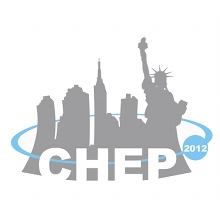Speaker
Giacomo Sguazzoni
(Universita e INFN (IT))
Description
The CMS tracking code is organized in several levels, known as 'iterative steps', each optimized to reconstruct a class of particle trajectories, as the ones of particles originating from the primary vertex or displaced tracks from particles resulting from secondary vertices. Each iterative step consists of seeding, pattern recognition and fitting by a kalman filter, and a final filtering and cleaning. Each subsequent step works on hits not yet associated to a reconstructed particle trajectory. The CMS tracking code underwent a major upgrade needed to make the reconstruction computing load compatible with the increasing instantaneous luminosity of LHC, resulting in a large number of primary vertices and tracks per bunch crossing. The iterative steps have been reorganized and optimized and an iterative step specialized for the reconstruction of photon conversion has been added. It is based on the innovative idea to use an existing track to build up a custom seed in the conversion hypothesis. For special event reconstruction applications, as the particle flow algorithm, it is necessary to test the possible association between a given reconstructed track and an energy deposit in calorimeters (cluster). The implementation of a k-dimensional tree in two dimensions allowed the combinatorics of links between tracks and clusters to be reduced from N*N to N*log(N), where N is the number of objects. The impact on reconstruction performances are promising and the prospects for future applications are discussed.
Authors
Dr
Domenico Giordano
(CERN)
Giacomo Sguazzoni
(Universita e INFN (IT))
